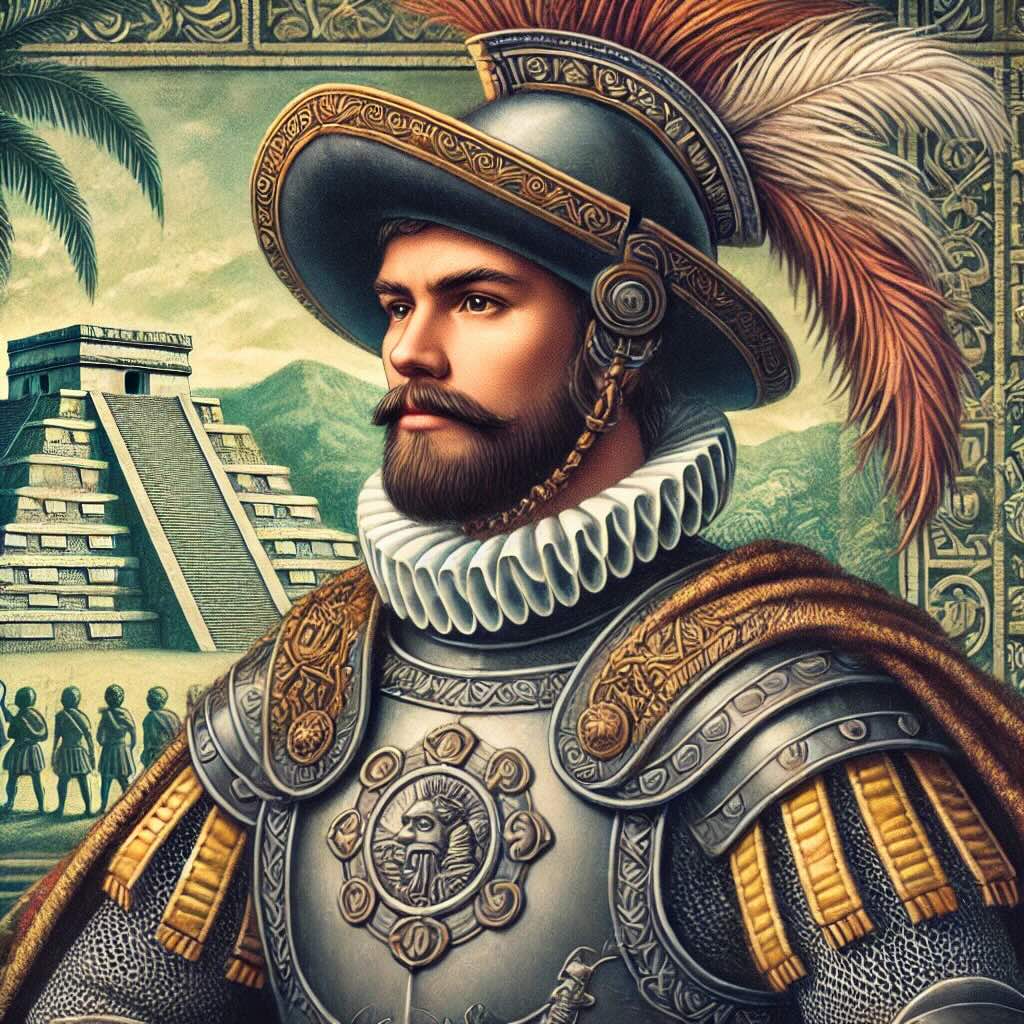
Spanish conquistador of Mexico who was known for subjugating the Aztecs and their King, Montezuma II. Cortés was rewarded for his services to Spain with the title of marquis in 1528. From 1530-1540, he held the position of captain-general of New Spain.
Hernando Cortés, also known as Hernán Cortés, was a Spanish conquistador born in 1485 in Medellín, Spain. He is best known for his role in the Spanish conquest of the Aztec Empire, which led to the establishment of Spanish rule in Mexico. Cortés’s life was marked by ambition, determination, and a relentless pursuit of wealth and power.
Cortés came from a noble but not wealthy family, and as a young man, he studied law at the University of Salamanca. However, he quickly grew bored with academic life and sought adventure in the New World, which was being explored by Europeans following the voyages of Christopher Columbus. In 1504, at the age of 19, Cortés sailed to the Americas, joining an expedition to the island of Hispaniola, now Haiti and the Dominican Republic. He later moved to Cuba, where he became a prominent landowner and military leader.
In 1518, Cortés was appointed to lead an expedition to the mainland of Mexico by the governor of Cuba, Diego Velázquez. However, Velázquez grew suspicious of Cortés's ambitions and tried to cancel the expedition. Defying the governor, Cortés set sail in 1519 with a small force of about 600 men, 16 horses, and a few cannons. He landed on the coast of Mexico, near present-day Veracruz, and began his march inland toward the powerful Aztec Empire.
Cortés’s success was due in part to his strategic alliances with indigenous peoples who were enemies of the Aztecs. He formed a crucial alliance with the Tlaxcalans, a group of indigenous people who had long resisted Aztec rule. Cortés also took advantage of the Aztec belief that the arrival of the Spanish might be the fulfillment of a prophecy about the return of the god Quetzalcoatl. The Aztec emperor, Montezuma II, initially welcomed Cortés and his men into the capital, Tenochtitlán, in 1519. However, relations quickly soured as the Spanish made their intentions clear.
In 1520, tensions escalated when Cortés was forced to leave Tenochtitlán to confront a Spanish force sent by Governor Velázquez to arrest him. Cortés defeated this force and persuaded many of its soldiers to join him. Meanwhile, the Aztecs rebelled against the Spanish presence in their city, and Montezuma was killed under mysterious circumstances—some accounts suggest he was stoned to death by his own people, while others say he was killed by the Spanish.
Cortés returned to Tenochtitlán to find the city in chaos. After a bloody retreat known as "La Noche Triste" (The Night of Sorrows), during which many Spanish and their allies were killed, Cortés regrouped, reinforced his army, and laid siege to the city. In August 1521, after months of fierce fighting, Tenochtitlán fell, marking the end of the Aztec Empire and the beginning of Spanish rule in Mexico.
Cortés was appointed governor of New Spain but faced numerous challenges, including legal battles with Spanish authorities and opposition from other conquistadors. He returned to Spain in 1541 and spent his final years largely out of favor with the Spanish court. Hernando Cortés died in 1547, leaving behind a complex legacy as both a daring explorer and a ruthless conqueror. His actions irrevocably changed the course of history in the Americas, leading to the establishment of Spanish colonial rule and the profound transformation of indigenous cultures.
 >
>